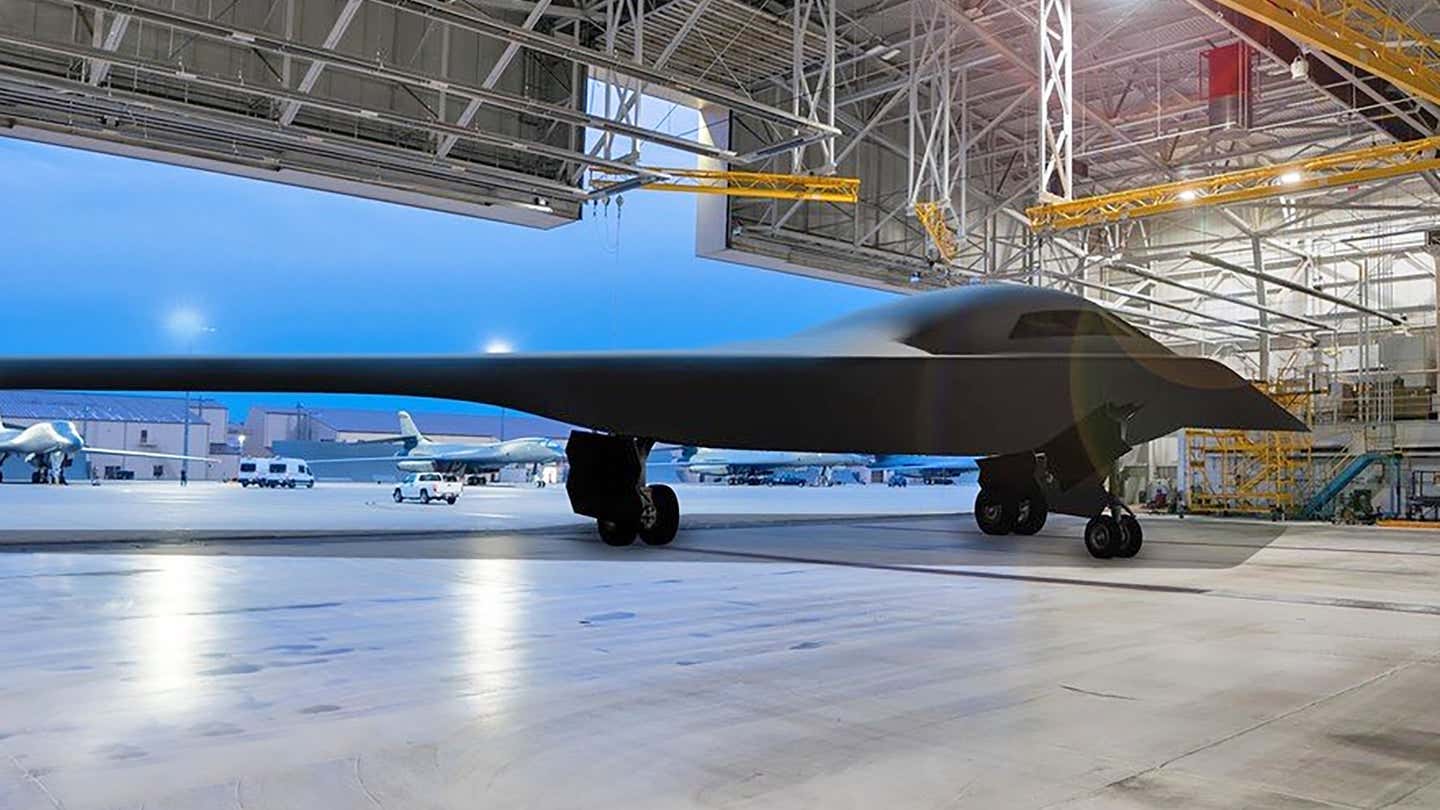The U.S. Air Force’s next-generation B-21 Raider bomber is edging ever closer to its keenly-awaited first flight, with the news that the first example has begun calibration tests — one of the final hurdles before it’s actually taken out onto the tarmac where it will work up to its maiden flight. Calibration is a critical part of pre-flight testing for any aircraft and involves checking that the airframe is able to cope with the kinds of loads expected of it once it gets up in the air, including flying through turbulence, and different kinds of maneuvers, such as dropping weapons and landing.
The fact the first B-21 is now undergoing calibration tests means that the airframe itself is more or less complete. Indeed, the Air Force has confirmed that it now has its wings and landing gear fitted and “really looks like a bomber.”

That statement came from Randall Walden, director of the Air Force’s Rapid Capabilities Office, whose updates on the status of the program were reported by Air Force Magazine.
Walden described the loads calibration test as a “normal thing you do,” allowing test engineers to confirm that the structure of the stealth bomber “is designed and built to what we actually meant it to do.”
What we don’t know is whether calibration testing involved moving the first B-21 from the Northrop Grumman production facility at Air Force Plant 42 in Palmdale, California, or if the trials are being done in situ. By now, another five B-21s are also taking shape on the same production line. The fact that a sixth aircraft was under construction was only revealed earlier this year.
In a statement provided to Aviation Week’s Brian Everstine, Northrop Grumman said the first B-21 “has moved from the line and entered formal ground test. That’s a testament to the speed and efficiency we’re achieving on the program.”
In keeping with the high levels of secrecy surrounding the program is the fact that the first B-21 is yet to receive a serial number, let alone a more informal name. However, Walden noted that the calibration test airframe will be very likely also be the first one to get airborne.
Exactly when that will happen is also uncertain, although Walden said that the overall schedule has not been significantly impacted by supply chain issues caused by, among others, the COVID-19 pandemic. At the same time, Northrop Grumman has pointed to the time-saving advantages that have been achieved through “innovative business practices and digital engineering.”
The B-21 is undoubtedly moving ever closer to its debut, with an eager public so far only having been treated to a handful of digital renderings suggesting how the bomber might look.

The highly anticipated rollout is likely to involve some fanfare, Walden confirmed, suggesting it would be a “historical event” to which “senior leaders and press” would be invited. While there’s no date set, the rollout is expected before the end of this year, with a first flight shortly afterward.
After rollout, we should know much more about the B-21, at least how it looks on the outside. By that point, calibration tests should be completed, leaving the Air Force fully confident in the aircraft’s ability to meet its design requirements.
What little we do know about the B-21 has come mainly from officials’ statements. Earlier this year, Air Force Maj. Gen. Jason R. Armagost, Director of Strategic Plans, Programs, and Requirements at Air Force Global Strike Command (AFGSC) stated: “The B-21, going into the future, is going to be our penetrating, get inside the anti-access, area of denial, dual-capable aircraft.” That last statement refers to the Raider’s ability to carry nuclear and conventional weapons.
By the time it’s rolled out, it shouldn’t be long before its onboard systems, including engines, can be powered up, followed by low- and high-speed taxi runs and, finally, a maiden flight. That historic event is expected to take the bomber from Palmdale to nearby Edwards Air Force Base, where the flight-test program will be run from.

While there are six B-21s confirmed to be in existence, or in build, as of now, it’s not clear how many in total will be produced during the current Engineering and Manufacturing Development (EMD) of the program. However, it’s worth noting that six airframes were built for the equivalent phase of the B-2 Advanced Technology Bomber program.
The Air Force’s stated plan is to eventually acquire at least 145 B-21s, which will eventually form part of a new-look bomber fleet alongside modernized B-52s.
It will be some time before significant numbers of B-21s begin to populate operational squadrons, but the countdown to the Air Force’s next bomber is now well and truly on.
Contact the author: thomas@thedrive.com
